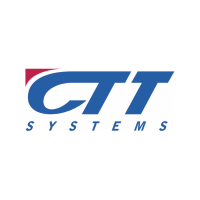
CTT Systems AB
STO:CTT


| US |

|
Johnson & Johnson
NYSE:JNJ
|
Pharmaceuticals
|
| US |

|
Berkshire Hathaway Inc
NYSE:BRK.A
|
Financial Services
|
| US |

|
Bank of America Corp
NYSE:BAC
|
Banking
|
| US |

|
Mastercard Inc
NYSE:MA
|
Technology
|
| US |

|
UnitedHealth Group Inc
NYSE:UNH
|
Health Care
|
| US |

|
Exxon Mobil Corp
NYSE:XOM
|
Energy
|
| US |

|
Pfizer Inc
NYSE:PFE
|
Pharmaceuticals
|
| US |

|
Palantir Technologies Inc
NYSE:PLTR
|
Technology
|
| US |

|
Nike Inc
NYSE:NKE
|
Textiles, Apparel & Luxury Goods
|
| US |

|
Visa Inc
NYSE:V
|
Technology
|
| CN |

|
Alibaba Group Holding Ltd
NYSE:BABA
|
Retail
|
| US |

|
3M Co
NYSE:MMM
|
Industrial Conglomerates
|
| US |

|
JPMorgan Chase & Co
NYSE:JPM
|
Banking
|
| US |

|
Coca-Cola Co
NYSE:KO
|
Beverages
|
| US |

|
Walmart Inc
NYSE:WMT
|
Retail
|
| US |

|
Verizon Communications Inc
NYSE:VZ
|
Telecommunication
|
Utilize notes to systematically review your investment decisions. By reflecting on past outcomes, you can discern effective strategies and identify those that underperformed. This continuous feedback loop enables you to adapt and refine your approach, optimizing for future success.
Each note serves as a learning point, offering insights into your decision-making processes. Over time, you'll accumulate a personalized database of knowledge, enhancing your ability to make informed decisions quickly and effectively.
With a comprehensive record of your investment history at your fingertips, you can compare current opportunities against past experiences. This not only bolsters your confidence but also ensures that each decision is grounded in a well-documented rationale.
Do you really want to delete this note?
This action cannot be undone.

| 52 Week Range |
224.2583
385
|
| Price Target |
|
We'll email you a reminder when the closing price reaches SEK.
Choose the stock you wish to monitor with a price alert.

|
Johnson & Johnson
NYSE:JNJ
|
US |

|
Berkshire Hathaway Inc
NYSE:BRK.A
|
US |

|
Bank of America Corp
NYSE:BAC
|
US |

|
Mastercard Inc
NYSE:MA
|
US |

|
UnitedHealth Group Inc
NYSE:UNH
|
US |

|
Exxon Mobil Corp
NYSE:XOM
|
US |

|
Pfizer Inc
NYSE:PFE
|
US |

|
Palantir Technologies Inc
NYSE:PLTR
|
US |

|
Nike Inc
NYSE:NKE
|
US |

|
Visa Inc
NYSE:V
|
US |

|
Alibaba Group Holding Ltd
NYSE:BABA
|
CN |

|
3M Co
NYSE:MMM
|
US |

|
JPMorgan Chase & Co
NYSE:JPM
|
US |

|
Coca-Cola Co
NYSE:KO
|
US |

|
Walmart Inc
NYSE:WMT
|
US |

|
Verizon Communications Inc
NYSE:VZ
|
US |
This alert will be permanently deleted.
 CTT Systems AB
CTT Systems AB
CTT Systems AB
Investor Relations
CTT Systems AB engages in the provision of condensation prevention and active humidification control systems for commercial aircraft. The company is headquartered in Nykoeping, Sodermanlands and currently employs 76 full-time employees. The firm develops, manufactures and sells humidity control systems for commercial aircrafts. Its activities are divided into three business units: CTT Systems, responsible for humidity control in aircraft; Bribo Mekaniska, providing stamped metal components; and Catron Elektronik, which offers communication and control equipment. The Company’s product portfolio comprises: Zonal Drying System, which eliminates the accumulation of condensation in an aircraft; Cair, a moisture management system that removes condensation from the aircraft’s structure and humidifies the cabin; Crew Humidifiers, increases humidity in the crew rest compartments and flight deck; as well as Cair VIP, a humidification system adapted to private jet plane. The company collaborates with a range of entities, such as Boeing and Airbus. Furthermore, the Company is a parent of CTT Systems Inc, Catron Elektronik AB and Bribo Mekaniska AB.

CTT Systems AB engages in the provision of condensation prevention and active humidification control systems for commercial aircraft. The company is headquartered in Nykoeping, Sodermanlands and currently employs 76 full-time employees. The firm develops, manufactures and sells humidity control systems for commercial aircrafts. Its activities are divided into three business units: CTT Systems, responsible for humidity control in aircraft; Bribo Mekaniska, providing stamped metal components; and Catron Elektronik, which offers communication and control equipment. The Company’s product portfolio comprises: Zonal Drying System, which eliminates the accumulation of condensation in an aircraft; Cair, a moisture management system that removes condensation from the aircraft’s structure and humidifies the cabin; Crew Humidifiers, increases humidity in the crew rest compartments and flight deck; as well as Cair VIP, a humidification system adapted to private jet plane. The company collaborates with a range of entities, such as Boeing and Airbus. Furthermore, the Company is a parent of CTT Systems Inc, Catron Elektronik AB and Bribo Mekaniska AB.





























 You don't have any saved screeners yet
You don't have any saved screeners yet
